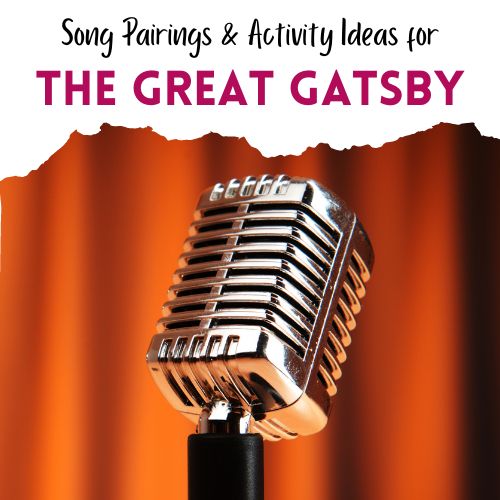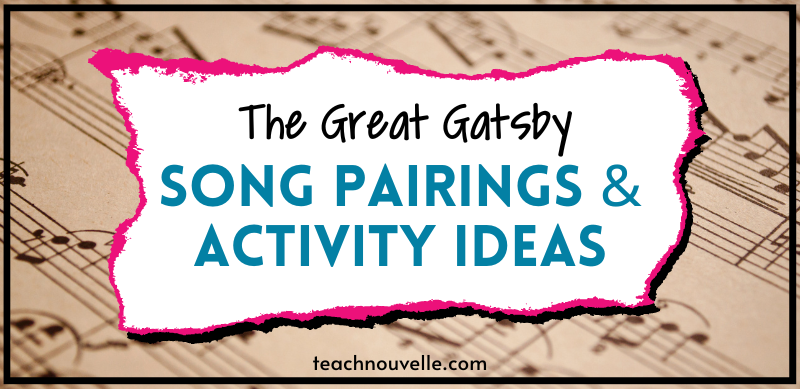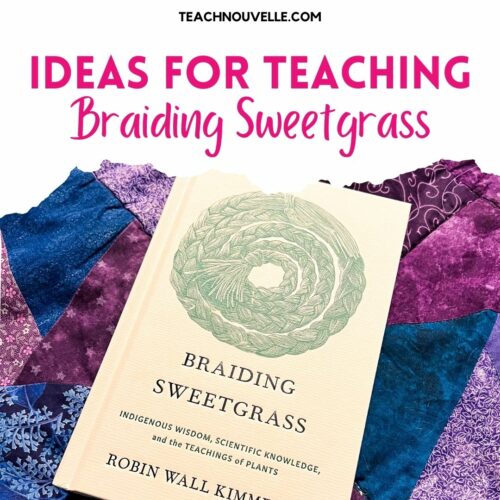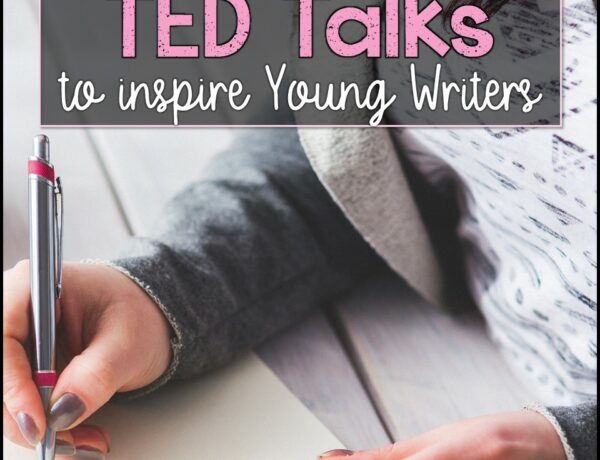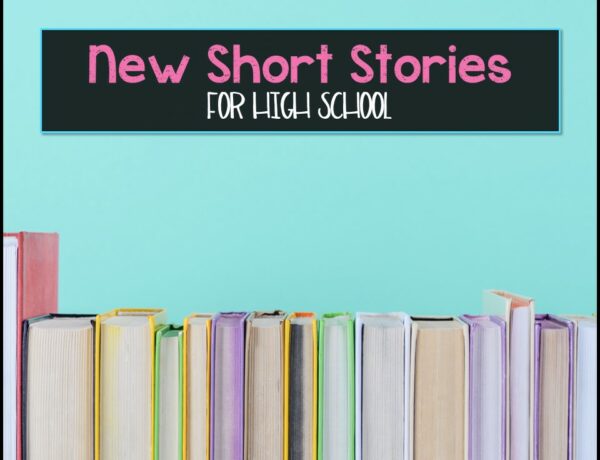Looking for songs to pair with The Great Gatsby? These four song pairings analyze the complex relationship between characters and themselves, the American Dream then and now, and the stark experiences between the rich and the poor.
Welcome, fellow Secondary ELA educators! I’m excited to blog about a creative approach to teaching F. Scott Fitzgerald’s “The Great Gatsby,” using music as a tool for deeper analysis and engagement.
I’ve carefully selected four poignant songs that not only resonate with the novel’s themes but also serve as a dynamic resource for your classroom activities.
These songs will help students explore…
✨ The complex dynamics between Gatsby and Daisy
✨ The evolving concept of the American Dream
✨ The societal pressure to alter one’s identity for personal and/or societal gain
✨ The stark living standards throughout different socioeconomic groups in the novel
If you’re like me and love incorporating opportunities for students to analyze short texts, check out these blog posts and resources that do exactly that:
✨ 15 Pop Culture Analysis Activities
✨ 15 songs to use in ELA (and 15 more)
✨ Song pairings for The Odyssey
✨ Song pairings for Romeo & Juliet
✨ 5 Songs by AAPI artists to teach literary elements
4 Songs to Pair with The Great Gatsby
Many of these song pairings for The Great Gatsby should be analyzed during or after reading.
If you’re in need of some guidance for building context before starting the novel, this blog post has some GREAT ideas, like a 4-corner brainstorm, while this Roaring 20s Escape Room does the work for you!
There’s also a more traditional Roaring 20s introduction activity you can check out here.
Song Analysis for Gatsby and Daisy's Relationship
Below, I suggest two ways you could have students analyze Gatsby and Daisy’s relationship with a song analysis.
The first focuses on their differing versions of “love” for one another, while the second focuses on how they both alter themselves or play pretend for one another.
Gatsby's "love" vs. Daisy's "love"
Have students identify one song that represents Gatsby’s love…errr obsession?…for Daisy and another to contrast Daisy’s superficial love for Gatsby. Students should justify their song selection with evidence from the song and the novel.
Here’s an example song I would use for Gatsby’s love for Daisy. You might want to provide students with this example to model your expectations.
Let me tell you…I FREAKED OUT when I read these lyrics and realized how perfectly they align with Gatsby’s disillusioned love for Daisy. Of course, students would have to know the truth about Myrtle’s murder in order to successfully analyze this song selection.
Playing Pretend: Gatsby vs. Daisy
Both Daisy and Gatsby “play pretend” in different ways. Daisy pretends to be happy in the life she has chosen with Tom Buchanan, while Gatsby pretends to be morally upstanding in the hopes that Daisy will find him worthy.
Have students select one song to represent Gatsby’s and Daisy’s facades. Then, they can compare and contrast how and why they alter their identities. What are they trying to gain? Protect?
See my example song for Daisy below; a great example song for Gatsby would be “Enough for You” by Olivia Rodrigo.
“Fake Happy” by Paramore aligns well with Daisy’s facade of happiness. This is a FANTASTIC opportunity for students to analyze the societal norms forced upon women, specifically white women, in the Roaring 20s.
Don’t worry! I have a Great Gatsby song pairing where students can analyze the socioeconomic disparities, especially for people of color, which is absent in the novel.
Song Analysis for the Evolving American Dream
Every time I have taught The Great Gatsby, I have given students the opportunity to tell me about their dreams. I have only taught in schools where a majority of my students were first generation Americans or recently emigrated.
Giving them the space to share their story helped students critically recognize whose stories were missing from Fitzgerald’s American Dream. This helps them analyze the overall message the novel communicates, the symbol of the green light, etc.
So, for this Great Gatsby song pairing, I have two options: “This is America” by Childish Gambino and “Americans” by Janelle Monáe. Both are better suited for high school students.
Monáe’s song definitely requires strong critical analysis skills and TIME. This is not a quick activity, and it will most likely require research (i.e. Jim Crow, “seventy-nine cents to your dollar,” 2018 politics).
However, this song poignantly depicts who is and what values are considered “American.” Students can dissect A TON from this song, despite it being released in 2018, and connect it to America today; who is still missing from the American narrative? What values are the same?
Song Analysis for the Socioeconomic Disparities
The novel talks of “old money” and “new money,” but for this activity, I suggest adding a “no money” category. Families like Myrtle’s and the missing voices of oppressed communities of color in the 1920’s would make up this category.
Have students find a song to represent each of the 3 categories and justify their selection with evidence from the lyrics and the novel. Below is an example to represent what communities in the “no money” group may have experienced.
Coolio’s song is a fantastic song pairing for The Great Gatsby because it shows how grand the socioeconomic disparity is for those who are disadvantaged.
If you want to extend this analysis activity, students can conduct research on income disparity now and in the 1920’s.
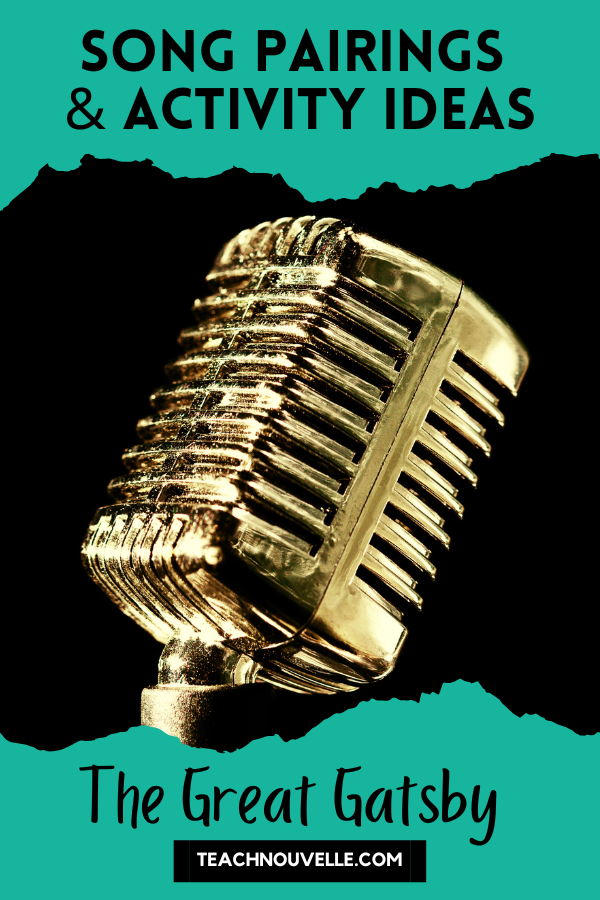
Final Thoughts on Songs to Pair with The Great Gatsby
I hope these songs to pair with The Great Gatsby have offered you a fresh, engaging way to bring Fitzgerald’s work to life in your classroom.
These songs not only echo the sentiments and conflicts of the characters, but also serve as a bridge connecting these experiences from the Roaring 20’s to contemporary perspectives.
Oh, and if you’re looking for a way to diversify your Great Gatsby unit, check out this inclusive text pairings resource that features other short text pairings!
I hope these Great Gatsby song pairings spark lively discussions, deepen literary analysis, and inspire creativity for your students!
Happy teaching!

